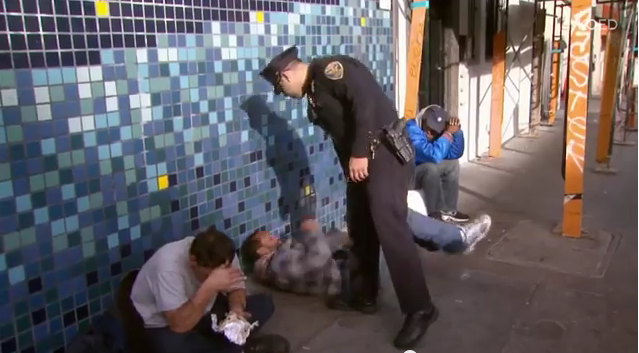"Nobody died here," Shaw said. "Does that mean things will continue until someone does die? Or it has to be a child who's shot? Or a tech worker who's shot? What does it take when we have demonstrable evidence that the situation's out of control on lower Turk for the police to respond?"
Shaw said the situation at Turk and Taylor is "atypical" of the rest of the Tenderloin, a neighborhood that has a reputation for street crime, is a haven for many homeless San Franciscans and is widely recognized as the last bastion of affordable housing for low-income residents. Shaw's organization did a study in 2011 that found violent crime on that first block of Turk Street -- between Mason and Taylor -- is eight times higher than the rate in the rest of the neighborhood and 35 times the rate for San Francisco as a whole.
"The question I think people are probably wondering is, in a city as prosperous as San Francisco where we have money coming in and we have tech companies moving in right around the corner, why do the police allow this to continue year after year?" Shaw said.
Shaw added that Police Chief Greg Suhr has visited the block and faults him for not committing more officers to stop drug dealing and other crime.
Capt. Cherniss credited Shaw and others in the community for their attempts to stabilize and revitalize the Tenderloin, and said he agrees more police officers are needed in the Tenderloin. He's quick to add, though, that increasing the police presence on lower Turk is not an answer in itself:
We need to look at the social situation that gives rise to issues like this. Down at the end of Turk, we have three or four SROs (single-room-occupany hotels). We also have some businesses down there that are not really participating in good community-building efforts, ones that stay open all night long, selling alcohol or products that really aren't promoting public safety. So you end up with situations like you had last night.
But Cherniss said Sunday night's shooting "is not indicative of the trajectory of things" in the Tenderloin and that he's confident that a turnaround is coming.
"It may sound a bit cliche, but if it's ever going to happen it's going to happen in the Tenderloin," Cherniss said. "We're seeing some great gains out here. We're seeing people investing in the neighborhoood and coming in here and really staking their claim and caring about what's going on."
As it happens, "KQED Newsroom" did a special segment on the Tenderloin and its ongoing social, political and law enforcement issues last January. Here's the video of the report, featuring correspondent Spencer Michels:
This post includes reporting from Isabel Angell of KQED News.

